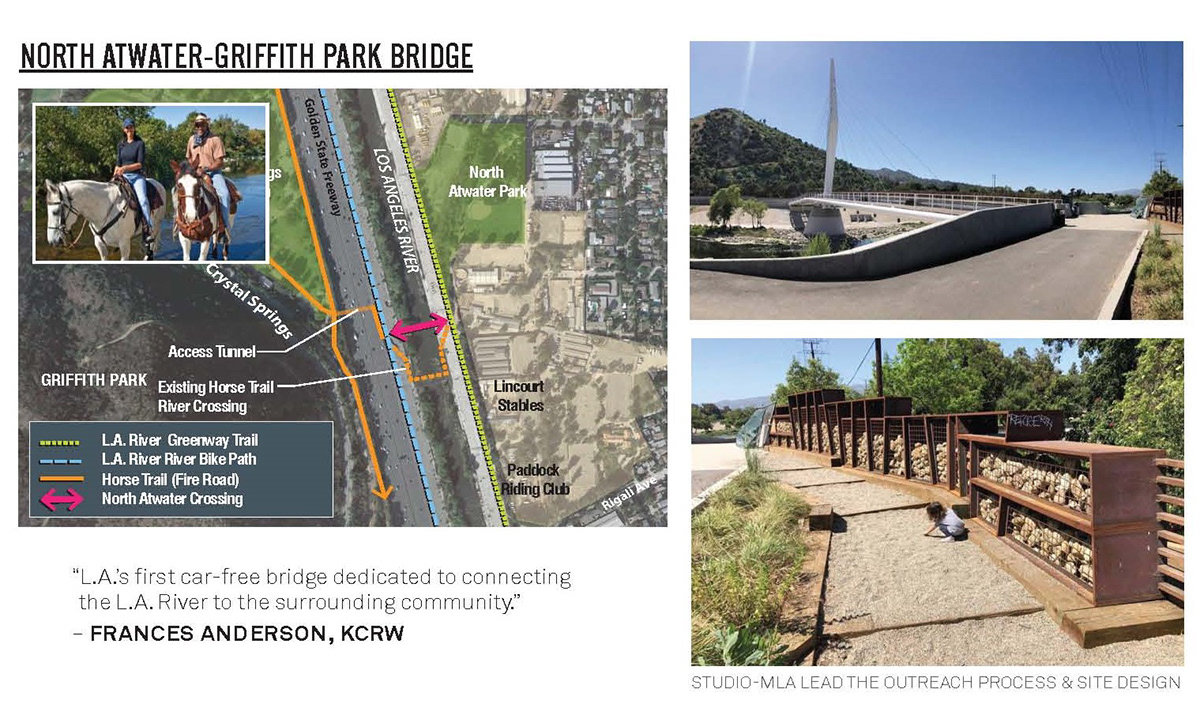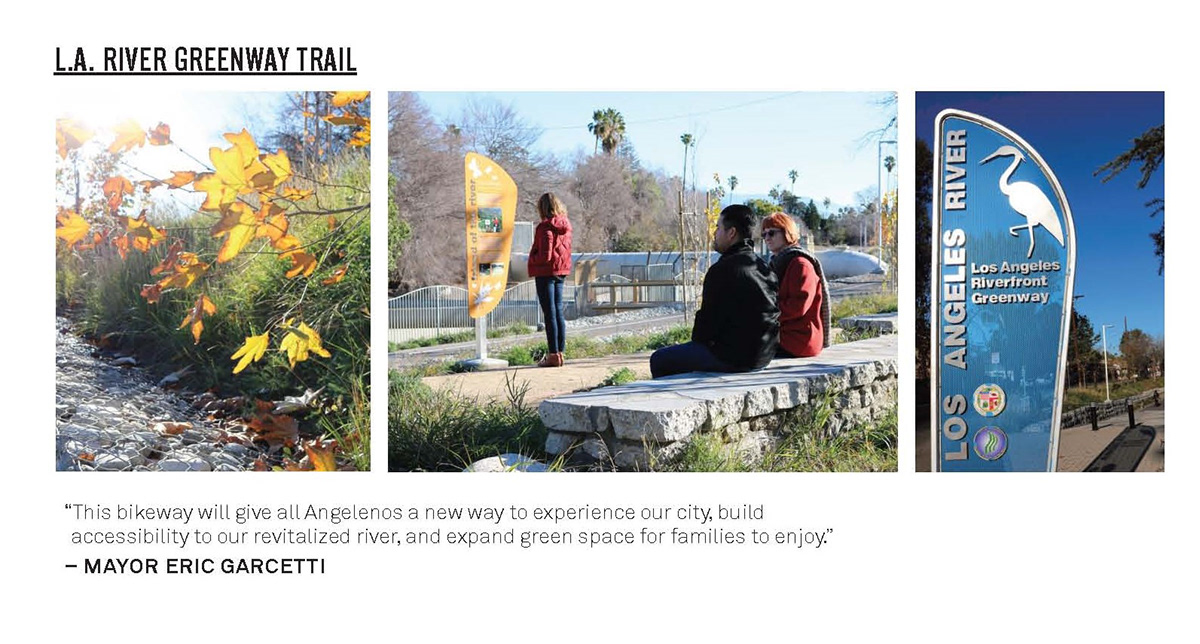
The Los Angeles River exemplifies our design ethic: we are in this for the long-term. Mia Lehrer first adopted the Los Angeles River as an advocacy project when she took her rambunctious young son to an early river cleanup in the 1990’s. She fell in love with the urban wild and the passionate individuals coalescing around river revitalization. For over two dozen years, Mia and Studio-MLA have made significant contributions to this endeavor—first to the Los Angeles River Revitalization Plan and then to a number of follow-up planning efforts and implementation phases. The process engaged in these plans, and the implemented pieces that came out of them, reflects the possibilities of advocacy by design with active and significant community participation.


LOS ANGELES RIVER REVITALIZATION PLAN
Los Angeles, California | 2007 | 32 Miles
Design Team: Tetra Tech, Studio-MLA , Civitas, Wenk Associates
Client: Los Angeles Bureau of Engineering
The Los Angeles River Revitalization Master Plan (LARRMP) was initiated by engaged civic leaders to consider visionary and technical opportunities to change the flood control channel into a source of ecological and socioeconomic revitalization. The plan was a crucial step in re-greening a sprawling city. A team of landscape architects and engineers led an 18-month-long study to create a comprehensive open space network in and around the Los Angeles River’s 32-mile corridor running through the City of Los Angeles. The goals that emerged were to revitalize the river by restoring a functional ecosystem; to green the neighborhoods by connecting them to the river with greenways and low-impact development projects; to capture community revitalization and opportunities for educational and public facilities; and to create value by improving quality of life and providing places for housing, working, and retail.
Community outreach was at the heart of the Master Plan process. A series of 184 meetings were held with key stakeholders, which helped identify 20 Opportunity Areas and over 240 potential projects along the Los Angeles River. Many of those projects are now complete or in construction.
Because of this, the River was drastically altered even before any shovel hit the dirt. The community changed it by thinking of it differently, and talking about it differently, and getting down into it and next to it. In the final document the team mapped a continuous river greenway and community opportunity areas with projects to increase access, water quality, habitat, art, civic pride, and community engagement.




UPPER LOS ANGELES RIVER & TRIBUTARIES REVITALIZATION PLAN
Los Angeles, California | 2020
Design Team: Tetra Tech, Studio-MLA , MIG
Client: Santa Monica Mountains Conservancy, Mountains Recreation and Conservation Authority
The unanimously adopted Upper Los Angeles Rivers and Tributaries plan grew from the community, the cities, the County, and the State’s desire for a coordinated effort to manage, maintain, revitalize, and re-imagine the River and her tributaries. As part of the design team, Studio- MLA developed a Revitalization Plan with more than 300 proposed opportunities that will provide 1.5 million people with access to new and improved open space along the Upper LA River, Aliso Canyon Wash, Tujunga Wash, Pacoima Wash, Burbank Western Channel, Verdugo Wash, and Arroyo Seco.



TAYLOR YARD G2 RIVER PARK
The 42-acre Taylor Yard G2 River Park has been referred to as “The Crown Jewel” of the Los Angeles River revitalization. The G2 Parcel is one portion of the original 244-acre Rail property and is the last piece in the puzzle that connects over 100 acres of open space along the LA River in the center of Los Angeles-the second-largest metropolitan region in the country.
Studio-MLA conducted meaningful, inclusive community engagement to inform the design process. Important takeaways include a strong support for an environmental learning facility and cultural center providing access and connectivity via pedestrian and bicycle trails and paths. Ample areas for natural elements that support native habitat and connections to nature with vistas and lookout points to take advantage of the site’s riverfront setting with 360-degree views to the surrounding mountains also ranked high. A large outdoor gathering/performance space, food amenities ranging from food carts to cafes and farmers markets, access to the river via kayaking while providing outdoor classrooms that support education were selected as key outdoor activities.





